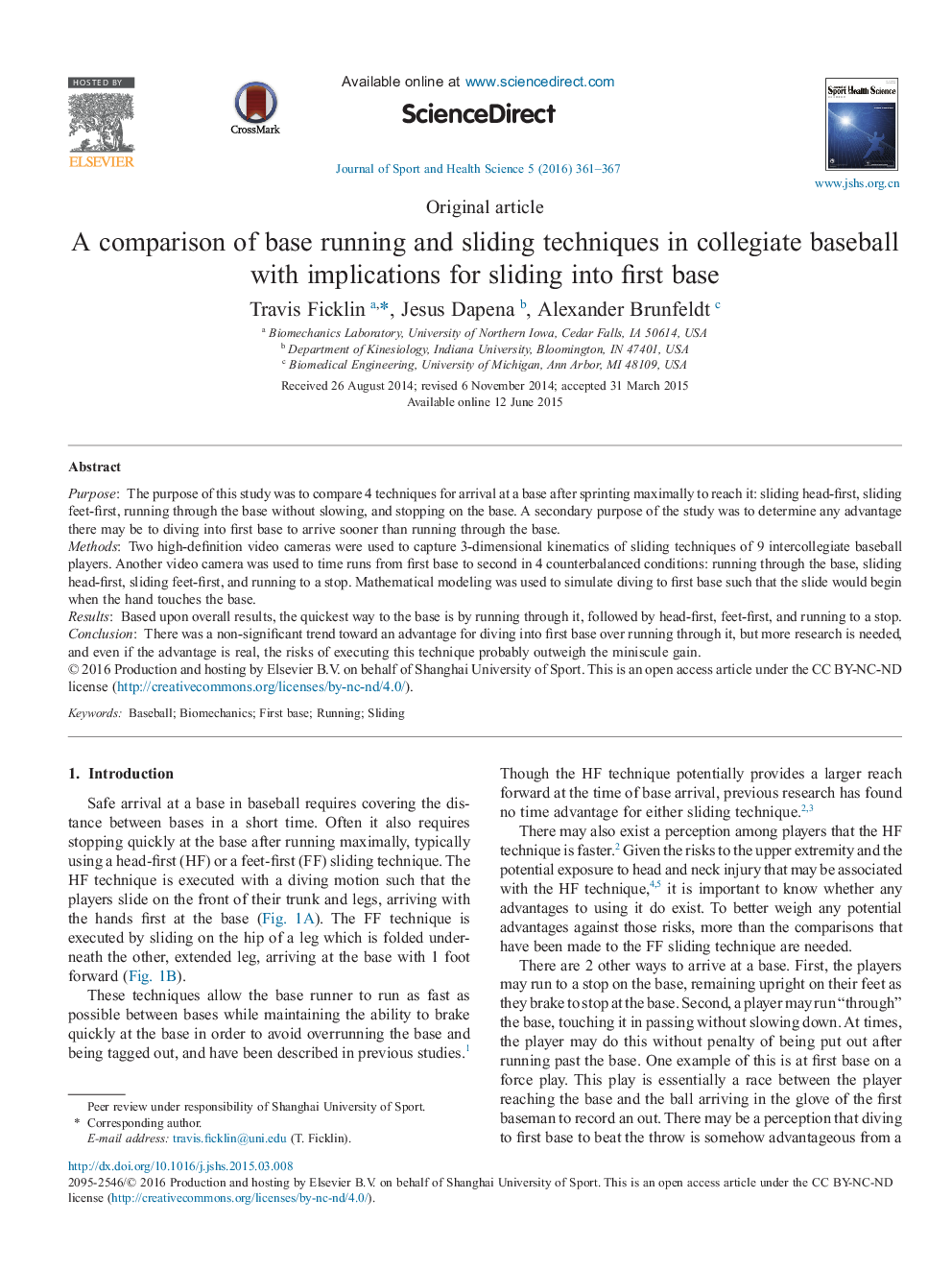| Article ID | Journal | Published Year | Pages | File Type |
|---|---|---|---|---|
| 5122118 | Journal of Sport and Health Science | 2016 | 7 Pages |
PurposeThe purpose of this study was to compare 4 techniques for arrival at a base after sprinting maximally to reach it: sliding head-first, sliding feet-first, running through the base without slowing, and stopping on the base. A secondary purpose of the study was to determine any advantage there may be to diving into first base to arrive sooner than running through the base.MethodsTwo high-definition video cameras were used to capture 3-dimensional kinematics of sliding techniques of 9 intercollegiate baseball players. Another video camera was used to time runs from first base to second in 4 counterbalanced conditions: running through the base, sliding head-first, sliding feet-first, and running to a stop. Mathematical modeling was used to simulate diving to first base such that the slide would begin when the hand touches the base.ResultsBased upon overall results, the quickest way to the base is by running through it, followed by head-first, feet-first, and running to a stop.ConclusionThere was a non-significant trend toward an advantage for diving into first base over running through it, but more research is needed, and even if the advantage is real, the risks of executing this technique probably outweigh the miniscule gain.
